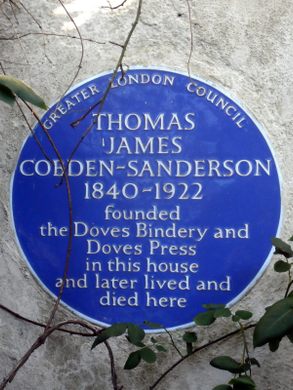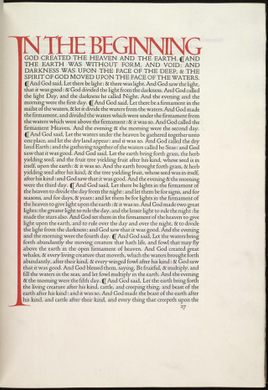The Dove
A glorious pub known for a spiteful printing feud and its famous typeface lost—then found—at the bottom of the Thames.
“I must, before I die, create the type for ‘Beautiful Book’ and actualise it, writing, printing, ornament and binding. I will learn to write, to print and to decorate,” wrote Thomas James Cobden-Sanderson of his life’s mission as bookbinder and font designer. Little did he know the legacy he was destined to leave, and that the only thing left standing would be a pub.
When Cobden-Sanderson established his first bindery in 1893 in London’s Hammersmith neighborhood, it made perfect sense that he would tip his hat to the local haunt of literary giants sitting just around the corner: The Dove public house. Founded in the early- to mid-18th century, the tavern had already housed a generous cross-section of writers and creatives by the time Cobden-Sanderson paid his tribute. Poet James Thomson is said to have composed his “Rule Britannia” under its eaves in 1740, and A.P. Herbert went on to immortalize the pub itself within his pages under the guise of “The Pigeon” in 1930.
Though the pub was added to England’s National Heritage List in June of 1954, the Dove has operated with few changes for centuries. To this day, the Dove’s doors remain open to one and all.
Meanwhile, Coburn-Sanderson’s inextricably linked Doves Bindery couldn’t have taken a more opposing tack from the pub after which it was named. In 1901 the bookbinder expanded his business in the form of a joint venture with Emery Walker. Together they opened Doves Press, located just around the corner from the Dove tavern.
The venture proved hugely successful; their five volume “English Bible” made the press a large profit. These “Doves Bibles” are still immensely valuable and can fetch over $45,000 when sold today.
Over time, however, the two men’s personal and professional relationship broke down. They finally severed their partnership in 1909, agreeing that Walker would have ownership of the business after Cobden-Sanderson’s death.
Increasingly erratic, Cobden-Sanderson declared that Walker would never have access to the press’ renowned typeface and began clandestinely “bequeathing” Doves Type to the River Thames. By 1916 he had slowly but surely thrown more than a ton (or 2,600 pounds) of the typeface, bundled into individual 12-pound paper parcels off the side of the nearby Hammersmith Bridge.
Out of vindictiveness to his former partner, the world had also been forced to give the Doves type up for lost, for if Cobden-Sanderson couldn’t use it, he determined no one else would either.
Or so the story went until November 2014, when 150 sorts of the original Doves type were salvaged from the Thames by a very determined designer named Robert Green. A digital facsimile font of the type is now available, which can be best perused while sipping on a pint at the Dove, gazing toward the Hammersmith Bridge, and chuckling about the immortal—almost spiteful—nature of all truly great work.
Know Before You Go
The Dove is a popular destination for dining. Evenings and weekends can get quite busy. If you are planning on visiting after 5 p.m. or on the weekend, it is advised to book a table in advance.






























Follow us on Twitter to get the latest on the world's hidden wonders.
Like us on Facebook to get the latest on the world's hidden wonders.
Follow us on Twitter Like us on Facebook